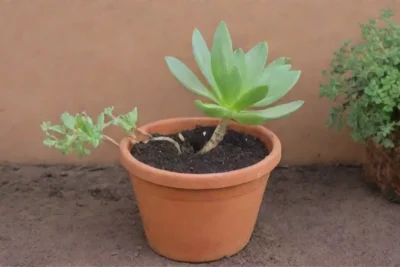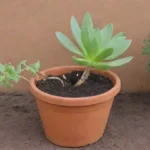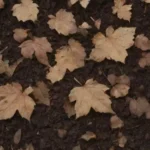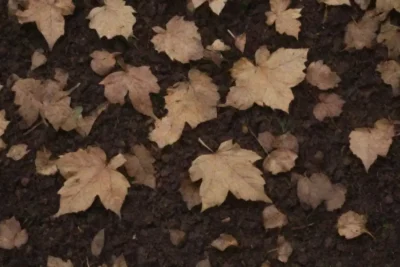
How Roots Affect the Overall Health and Survival of Succulents

Introduction
Succulents, often celebrated for their aesthetic appeal and low maintenance, have gained immense popularity in the world of gardening. These fascinating plants are recognizable by their thick, fleshy tissues that are adept at retaining water, allowing them to thrive in arid environments. As much as their visible beauty captivates enthusiasts, an essential behind-the-scenes factor plays a crucial role in their well-being: the root system. Roots are the unseen lifeline of the plant, anchoring it in the soil while absorbing the essential resources for growth.
This article delves into the critical role of roots in the health and survival of succulents. We will explore how their structure supports nutrient absorption, their combination with soil types influences growth, the importance of root health, and effective watering practices that enhance the well-being of succulents. By the end of this discussion, you will gain a deeper appreciation for the connection between roots and the vitality of your succulent plants.
Understanding the Structure of Succulent Roots
Succulent roots are incredibly specialized, reflecting their adaptation to drought conditions. Unlike typical plant roots that are often long and expansive, succulent roots tend to be shorter, thicker, and denser. These features allow them to efficiently store water and nutrients during periods of scarcity. As a result, their unique anatomical structures play a vital role in the plant's ability to survive.
Taproots vs. Fibrous Roots
When discussing the types of roots, it is essential to distinguish between taproots and fibrous roots. Some succulents develop a primary taproot, which anchors the plant deeply into the soil while allowing for water and nutrient absorption from a wider area. Conversely, others produce a network of fibrous roots that spread horizontally across the soil surface. This fibrous network enhances the plant's ability to capture moisture from light rains, making them particularly adept at thriving in unpredictable climates.
Understanding these root structures directly contributes to better gardening practices. By recognizing whether your succulent has a taproot or fibrous root system, you can adapt your watering and soil management strategies accordingly. For instance, succulents with a prominent taproot may require deeper watering, ensuring that moisture penetrates down where the roots can access it effectively.
Mycorrhizal Associations
Another fascinating aspect of succulent roots is their potential to engage in mycorrhizal associations with fungi. Mycorrhizal fungi form symbiotic relationships with plant roots, extending their reach into the soil and increasing nutrient and water absorption. In return, the fungi receive carbohydrates produced by the plant during photosynthesis. This relationship can be especially beneficial for succulents as the fungi assist in the uptake of essential nutrients like phosphorus, which is crucial for energy transfer within the plant.
Understanding and nurturing this relationship can bolster your succulents' resilience and overall health, making it worthwhile for growers to incorporate mycorrhizal inoculants into their potting soil mix. Healthy roots lead to flourishing plants, and the combination of succulent roots with beneficial fungi can significantly enhance nutrient uptake and soil health.
 How to Handle Broken or Damaged Succulent Roots Properly
How to Handle Broken or Damaged Succulent Roots ProperlyThe Role of Soil in Root Development
The soil type you select for your succulents profoundly influences their root health and overall well-being. The right soil provides not only drainage and aeration but also appropriate pH levels, ensuring that the essential nutrients are available for uptake. When selecting a soil medium for your succulents, understanding the properties that promote root development is crucial.
Well-Draining Soil Mixes
One of the most critical factors is to choose a well-draining soil mix. Succulents are highly susceptible to root rot, a condition that occurs when water cannot escape from the soil, leading to root decay. A suitable soil mix typically includes components such as perlite, pumice, and coarse sand, which improve drainage while allowing some water retention. By ensuring that excess moisture drains away, you create an ideal environment where the roots can safely absorb water when needed without the risk of rot.
pH Levels and Nutrient Absorption
Another important aspect of soil selection is the pH level. Most succulents thrive in slightly acidic to neutral pH, typically between 6 and 7. The pH of the soil directly influences nutrient availability. For instance, certain nutrients become less soluble at either extreme of the pH scale. Therefore, selecting a soil mix that falls within the optimal pH range allows for maximum nutrient availability. Regular checks on the soil pH can help mitigate issues related to nutrient deficiency, ensuring your succulents have everything they need to grow strong roots and, consequently, robust growth.
Soil Compaction and Root Health
Soil compaction is another common issue that can hinder root health. When soil particles are packed tightly, it limits the ability of roots to penetrate and expand, thus restricting the plant’s ability to absorb water and nutrients. You can prevent soil compaction by using lighter soil mixes and ensuring that pots have adequate drainage holes. This not only aids root expansion but also allows air pockets to form, supplying the roots with necessary oxygen.
Maintenance and Caring for Root Health

To ensure the longevity and health of your succulents, it is essential to maintain good root health actively. Proper watering practices, regular checks for pests or diseases, and even considerations for pot size can significantly influence how well your succulent roots develop.
Watering Practices
Watering is undoubtedly the most critical factor affecting root health. Overwatering is one of the leading causes of poor root health in succulents. The general rule of thumb is to allow the soil to dry out entirely between watering sessions. The frequency, of course, depends on various factors, including the plant species, environmental conditions, and potting medium. A practical way to check if your succulent needs water is to insert a finger into the soil; if the top inch feels dry, it's time for a drink.
 Signs of Rotting Roots in Succulents and How to Address It
Signs of Rotting Roots in Succulents and How to Address ItMoreover, when watering, it is advisable to water deeply but infrequently rather than giving a small amount each day or week. This practice encourages deeper root growth as the plant stretches its roots downwards in search of moisture. Additionally, using clean, distilled water or rainwater can help prevent any salt build-up that may occur from tap water, which can negatively impact root health over time.
Pest and Disease Management
Regular inspections are also essential for keeping your succulents healthy. Unnoticed pests can chew on roots or carry diseases that compromise root systems. Common pests that affect succulents include aphids, mealybugs, and fungus gnats. Combatting these pests often requires isolating affected plants and applying appropriate treatments such as insecticidal soap or neem oil. Maintaining good airflow around your plants and keeping the environment clean will help prevent infestations. If you keep an eye out for potential issues, you can address problems before they have a chance to affect root health severely.
Pot Size Consideration
Choosing the right pot size is equally crucial for root development. Succulents prefer to be slightly root-bound, meaning they enjoy being a bit snug in their pots. If the pot is too large, the excess soil retains moisture, which can lead to root rot. If your succulent is thriving and showing signs of growth, such as new leaves or stems, it may soon be time for a repotting. This is an opportunity to check the root health, removing any dead or rotting roots while ensuring the plant has just enough space to grow comfortably.
Conclusion
In conclusion, the health of succulent roots is paramount to the overall well-being and survival of these marvelous plants. Root structures play a significant role in water and nutrient absorption, while the choice of soil and its properties can deeply influence root health. Moreover, maintenance practices such as monitoring watering, managing pests, and selecting appropriate pot sizes are critical for supporting robust root systems.
As you cultivate your lush collection of succulents, remember that the life beneath the surface is just as vital as what greets the eye. By paying attention to root health, nourishing the soil, and understanding your plants' unique needs, you can ensure that your succulents not only survive but thrive in your care. Whether you are a seasoned gardener or a novice yearning to nurture life, this newfound understanding of roots will elevate your succulent gardening practice, leading to beautiful displays that flourish year after year. Happy planting!
If you want to read more articles similar to How Roots Affect the Overall Health and Survival of Succulents, you can visit the Establishing Root Systems category.


You Must Read